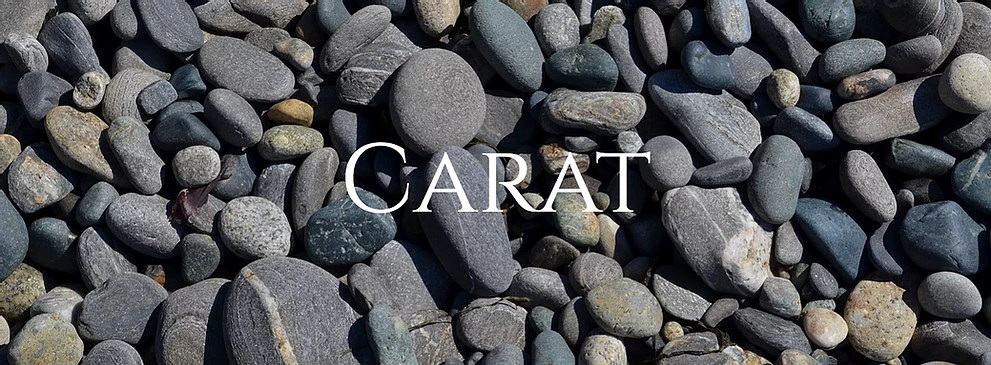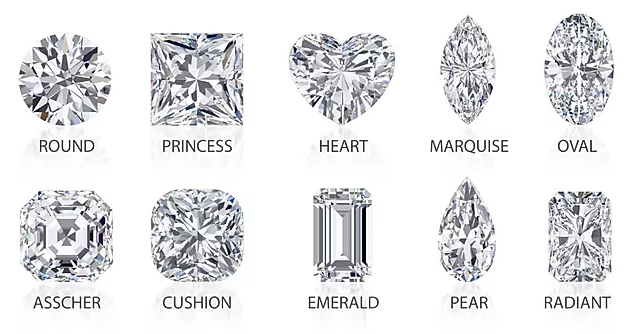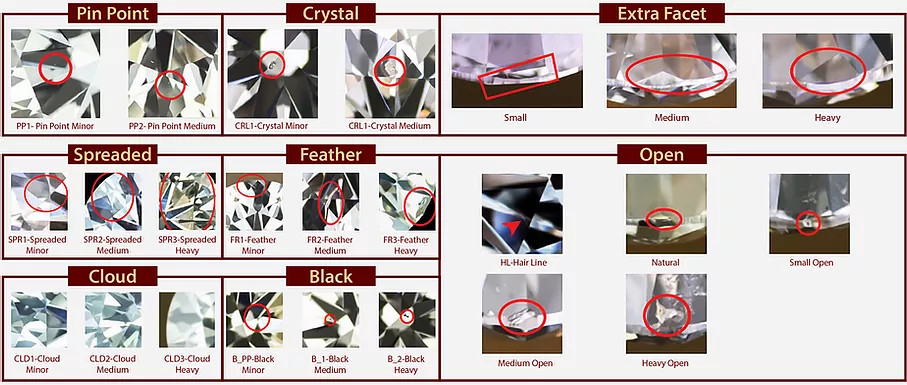DIAMONDS 101
The ultimate guide to purchasing your very first diamond!

MANEE's Diamond Grading Criteria is created by our experts with 25+ years of experience within the industry and aligns with the standards set by GIA, IGI and HRD.
We hold great pride in our grading criteria maintaining a high-quality product with complete transparency.
The cut of a natural diamond determines how it interacts with light.
The cut grading system assesses a diamond’s cosmetic appearance, including its brightness, fire, and scintillation, which make up the way a diamond reflects light, dispersing it into color, and sparkles.
To maximize its beauty, natural diamond cutting requires a mix of artistry and precision. The cut does not refer to the shape of the diamond but to the quality of the proportion, polish and symmetry the diamonds are cut. Which is why the cut grade also judges a diamond based on the craftsmanship that went into it.

MANEE's Diamond Cut Grading Criteria
- Cut GradeDescription
- EXExcellent Cut
- VGVery Good Cut
- GGood Cut
- FFair Cut
Further Details on our Diamond Cut Grading:
Polish is the last diamond cut procedure, where polished facets improve the brilliance of the diamond.
- Polish GradeDescription
- EXExcellent Polish
- VGVery Good Polish
- GGood Polish
- FFair Polish
Symmetry refers to the alignment of facets, if they aren't cut consistently the light is misdirected when entering the diamond.
- Symmetry GradeDescription
- EXExcellent Symmetry
- VGVery Good Symmetry
- GGood Symmetry
- FFair Symmetry

A natural diamond’s color grade is usually a measure of how colorless the diamond is. Most natural diamonds appear colorless to the average shopper, but actually have slight tones of yellow or brown. The closer the stone is to colorless, the rarer and generally more valuable it is. Natural diamonds are graded on a color scale ranging from D (colorless) to Z (heavily tinted brown or yellow).
Diamonds can also form naturally in almost any color imaginable because of factors apparent in the earth when they form. Most of these natural “fancy” colors are so rare that their value can be limitless, and they are graded on a scale more closely describing the visible color.
MANEE's Diamond Color Grading Criteria


Natural diamonds formed deep within the Earth, and as a result, they often carry unique markings called inclusions or blemishes. These common markings are usually the result of non-carbon elements or interruptions during the extreme heat and pressure a diamond goes through while forming deep within the Earth, and can be considered small time capsules that tell the story of the natural diamond’s formation.
A diamond’s clarity refers to the absence of these inclusions or blemishes. Natural diamonds that form without any inclusions are extremely rare and deemed “flawless” on most grading scales. These rare diamonds are some of the most valuable in the world.
MANEE's Diamond Clarity Grading Criteria

You can identify the
inclusions in the following diamonds:

The carat of a natural diamond is the measurement of the diamond’s weight. The carat derives its name from the carob seed, a small, uniform seed with a commonly equal weight. These seeds were used to balance scales in early gem trading, before the metric carat was created as the universal form of measurement.
A full carat diamond weighs 200 milligrams, and full carat and larger natural diamonds are becoming rarer by the day as supply continues to decrease and no significant deposits have been found in decades.
MANEE's Diamond Carat Grading Criteria


The shape of a natural diamond is truly a sign of skilled craftsmanship. There are several shapes that rough diamonds are cut into but true art lies in the facets polished to create the fancy shapes.
The round-shape diamond is most popular since it is easiest to set in jewelry mounts. However, preference on shape is purely subjective and varies with every customer.


A natural diamond's fluorescence is a symbol of nature's fascinating properties. When exposed to ultraviolet radiations, the diamond will glow if it carries fluorescent characteristics. The beauty lies in the fact that only 20% of all diamonds hold some level of fluorescence making it a rare quality.
This can be helpful for natural diamonds that may have a faint yellow color (I-M grade) to seem brighter with a better luster. However, strong fluorescence in colorless diamonds (DEF grade) causes them to look milky and dull.


Luster or Brilliance is the most sought after and valued attributes to a diamond.
Luster describes the fire and sparkle of the diamond ~ the sparklier the better. This quality is dependent on the light reflected on the stone, thus we analyze our diamonds based on two segments of luster:
Luster/Brilliance and Milkiness
- Luster GradeDescription
- EXExcellent Luster
- VGVery Good Luster
- GGood Luster
- FFair Luster
Milkiness refers to the hazy inclusion in the diamond - this may be white or grey in color. The magnitude of milkiness affects the pricing and the overall luster of the diamond.
- Milkiness GradeDescription
- ML - 1Slightly Milky
- ML - 2Medium Milky
- ML - 3Heavy Milky
other inclusions
Table Inclusion - this refers to the inclusions found in the center table of the diamond.
Side Inclusion - this refers to the inclusions found in the crown surrounding the table of the diamond.


Black Inclusions (Natts)
We grade diamonds on the basis of black inclusions as compared to the total inclusions by determining through these categories:

Other Inclusions
We grade diamonds on the basis of five types of inclusions below:
- Pin Point (PP)
It is a very small crystal that looks like a tiny dot while using a 10x loupe. Pin Points are generally white in color but occasionally they can be dark also.
- Clouds (CLD)
A cloud consists of many tightly grouped pin points. Some clouds look like a light haze, while others are dense and almost impossible to see through the naked eye.
- Crystal (CRL)
It is a mineral crystal contained in some diamonds. A crystal can be of almost any size, colored or colorless, and can appear alone or in groups.
- Feather (FR)
A feather is a general term for any break in the diamond.
- Spreaded (SPR)
A spreaded inclusion appears when the feather inclusions are in greater number, spread across and not grouped together.


Open Inclusions
These are inclusions on the surface of the diamond. There are 5 types of inclusions

Extra Facets
An extra facet is very rare and often placed on normal facets of the diamond to improve its brilliance.






